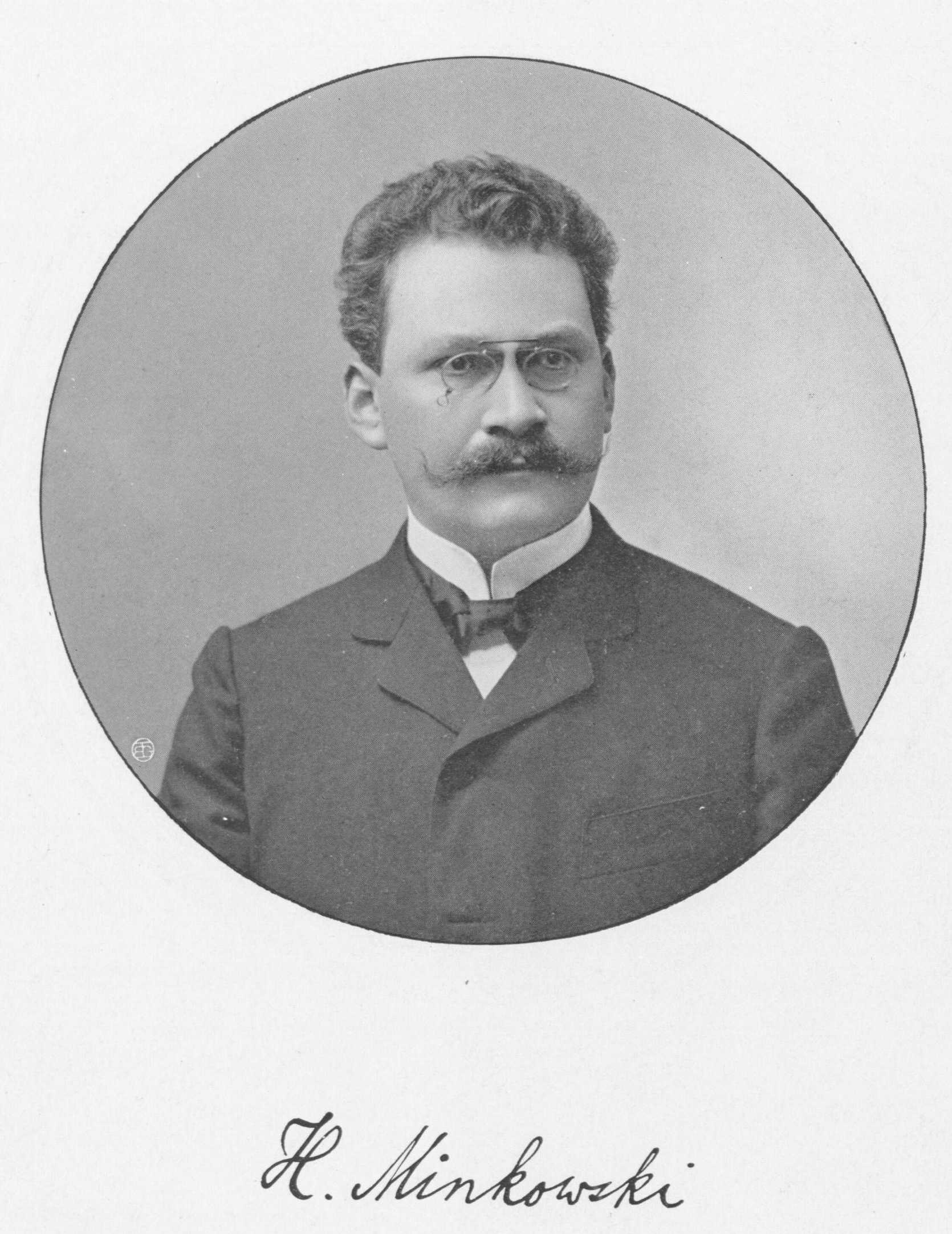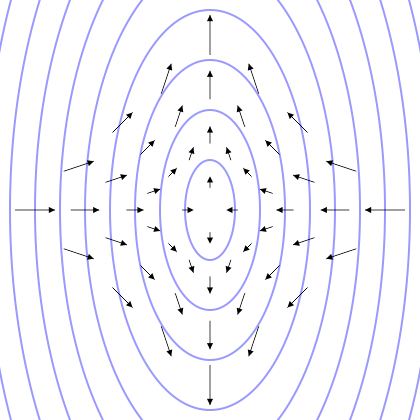|
Coordinate Conditions
In general relativity, the laws of physics can be expressed in a generally covariant form. In other words, the description of the world as given by the laws of physics does not depend on our choice of coordinate systems. However, it is often useful to fix upon a particular coordinate system, in order to solve actual problems or make actual predictions. A coordinate condition selects such coordinate system(s). Indeterminacy in general relativity The Einstein field equations do not determine the metric uniquely, even if one knows what the metric tensor equals everywhere at an initial time. This situation is analogous to the failure of the Maxwell equations to determine the potentials uniquely. In both cases, the ambiguity can be removed by gauge fixing. Thus, coordinate conditions are a type of gauge condition. No coordinate condition is generally covariant, but many coordinate conditions are Lorentz covariant or rotationally covariant. Naively, one might think that coordinat ... [...More Info...] [...Related Items...] OR: [Wikipedia] [Google] [Baidu] |
General Relativity
General relativity, also known as the general theory of relativity, and as Einstein's theory of gravity, is the differential geometry, geometric theory of gravitation published by Albert Einstein in 1915 and is the current description of gravitation in modern physics. General theory of relativity, relativity generalizes special relativity and refines Newton's law of universal gravitation, providing a unified description of gravity as a geometric property of space and time in physics, time, or four-dimensional spacetime. In particular, the ''curvature of spacetime'' is directly related to the energy and momentum of whatever is present, including matter and radiation. The relation is specified by the Einstein field equations, a system of second-order partial differential equations. Newton's law of universal gravitation, which describes gravity in classical mechanics, can be seen as a prediction of general relativity for the almost flat spacetime geometry around stationary mass ... [...More Info...] [...Related Items...] OR: [Wikipedia] [Google] [Baidu] |
Christoffel Symbols
In mathematics and physics, the Christoffel symbols are an array of numbers describing a metric connection. The metric connection is a specialization of the affine connection to surface (topology), surfaces or other manifolds endowed with a metric tensor, metric, allowing distances to be measured on that surface. In differential geometry, an affine connection can be defined without reference to a metric, and many additional concepts follow: parallel transport, covariant derivatives, geodesics, etc. also do not require the concept of a metric. However, when a metric is available, these concepts can be directly tied to the "shape" of the manifold itself; that shape is determined by how the tangent space is attached to the cotangent space by the metric tensor. Abstractly, one would say that the manifold has an associated (orthonormal) frame bundle, with each "vierbein, frame" being a possible choice of a coordinate frame. An invariant metric implies that the structure group of the fr ... [...More Info...] [...Related Items...] OR: [Wikipedia] [Google] [Baidu] |
Post-Newtonian Expansion
In general relativity, post-Newtonian expansions (PN expansions) are used for finding an approximate solution of Einstein field equations for the metric tensor (general relativity), metric tensor. The approximations are expanded in small parameters that express orders of deviations from Newton's law of universal gravitation. This allows approximations to Einstein's equations to be made in the case of weak fields. Higher-order terms can be added to increase accuracy, but for strong fields sometimes it is preferable to solve the complete equations numerically. This method is a common mark of Effective field theory, effective field theories. In the limit, when the small parameters are equal to 0, the post-Newtonian expansion reduces to Newton's law of gravity. Expansion in 1/''c''2 The post-Newtonian approximations are Taylor series, expansions in a small parameter, which is the ratio of the velocity of the matter that creates the gravitational field, to the speed of light, which ... [...More Info...] [...Related Items...] OR: [Wikipedia] [Google] [Baidu] |
Schwarzschild Metric
In Einstein's theory of general relativity, the Schwarzschild metric (also known as the Schwarzschild solution) is an exact solution to the Einstein field equations that describes the gravitational field outside a spherical mass, on the assumption that the electric charge of the mass, angular momentum of the mass, and universal cosmological constant are all zero. The solution is a useful approximation for describing slowly rotating astronomical objects such as many stars and planets, including Earth and the Sun. It was found by Karl Schwarzschild in 1916. According to Birkhoff's theorem, the Schwarzschild metric is the most general spherically symmetric vacuum solution of the Einstein field equations. A Schwarzschild black hole or static black hole is a black hole that has neither electric charge nor angular momentum (non-rotating). A Schwarzschild black hole is described by the Schwarzschild metric, and cannot be distinguished from any other Schwarzschild black hole except by ... [...More Info...] [...Related Items...] OR: [Wikipedia] [Google] [Baidu] |
Minkowski Space
In physics, Minkowski space (or Minkowski spacetime) () is the main mathematical description of spacetime in the absence of gravitation. It combines inertial space and time manifolds into a four-dimensional model. The model helps show how a spacetime interval between any two events is independent of the inertial frame of reference in which they are recorded. Mathematician Hermann Minkowski developed it from the work of Hendrik Lorentz, Henri Poincaré, and others said it "was grown on experimental physical grounds". Minkowski space is closely associated with Einstein's theories of special relativity and general relativity and is the most common mathematical structure by which special relativity is formalized. While the individual components in Euclidean space and time might differ due to length contraction and time dilation, in Minkowski spacetime, all frames of reference will agree on the total interval in spacetime between events.This makes spacetime distance an inva ... [...More Info...] [...Related Items...] OR: [Wikipedia] [Google] [Baidu] |
Physical Cosmology
Physical cosmology is a branch of cosmology concerned with the study of cosmological models. A cosmological model, or simply cosmology, provides a description of the largest-scale structures and dynamics of the universe and allows study of fundamental questions about its Cosmogony, origin, structure, Chronology of the universe, evolution, and ultimate fate.For an overview, see Cosmology as a science originated with the Copernican principle, which implies that astronomical object, celestial bodies obey identical physical laws to those on Earth, and Newtonian mechanics, which first allowed those physical laws to be understood. Physical cosmology, as it is now understood, began in 1915 with the development of Albert Einstein's general relativity, general theory of relativity, followed by major observational discoveries in the 1920s: first, Edwin Hubble discovered that the universe contains a huge number of external Galaxy, galaxies beyond the Milky Way; then, work by Vesto Sliph ... [...More Info...] [...Related Items...] OR: [Wikipedia] [Google] [Baidu] |
Parameterized Post-Newtonian Formalism
In physics, precisely in the study of the theory of general relativity and many alternatives to it, the post-Newtonian formalism is a calculational tool that expresses Einstein's (nonlinear) equations of gravity in terms of the lowest-order deviations from Newton's law of universal gravitation. This allows approximations to Einstein's equations to be made in the case of weak fields. Higher-order terms can be added to increase accuracy, but for strong fields, it may be preferable to solve the complete equations numerically. Some of these post-Newtonian approximations are expansions in a small parameter, which is the ratio of the velocity of the matter forming the gravitational field to the speed of light, which in this case is better called the speed of gravity. In the limit, when the fundamental speed of gravity becomes infinite, the post-Newtonian expansion reduces to Newton's law of gravity. The parameterized post-Newtonian formalism or PPN formalism, is a version of this fo ... [...More Info...] [...Related Items...] OR: [Wikipedia] [Google] [Baidu] |
Gravitational Wave
Gravitational waves are oscillations of the gravitational field that Wave propagation, travel through space at the speed of light; they are generated by the relative motion of gravity, gravitating masses. They were proposed by Oliver Heaviside in 1893 and then later by Henri Poincaré in 1905 as the gravitational equivalent of Electromagnetic radiation, electromagnetic waves. In 1916, Albert Einstein demonstrated that gravitational waves result from his general theory of relativity as ripples in spacetime. Gravitational waves transport energy as gravitational radiation, a form of radiant energy similar to electromagnetic radiation. Newton's law of universal gravitation, part of classical mechanics, does not provide for their existence, instead asserting that gravity has instantaneous effect everywhere. Gravitational waves therefore stand as an important relativistic phenomenon that is absent from Newtonian physics. Gravitational-wave astronomy has the advantage that, unlike elec ... [...More Info...] [...Related Items...] OR: [Wikipedia] [Google] [Baidu] |
Metric Tensor
In the mathematical field of differential geometry, a metric tensor (or simply metric) is an additional structure on a manifold (such as a surface) that allows defining distances and angles, just as the inner product on a Euclidean space allows defining distances and angles there. More precisely, a metric tensor at a point of is a bilinear form defined on the tangent space at (that is, a bilinear function that maps pairs of tangent vectors to real numbers), and a metric field on consists of a metric tensor at each point of that varies smoothly with . A metric tensor is ''positive-definite'' if for every nonzero vector . A manifold equipped with a positive-definite metric tensor is known as a Riemannian manifold. Such a metric tensor can be thought of as specifying ''infinitesimal'' distance on the manifold. On a Riemannian manifold , the length of a smooth curve between two points and can be defined by integration, and the distance between and can be defined as ... [...More Info...] [...Related Items...] OR: [Wikipedia] [Google] [Baidu] |
Inverse Matrix
In linear algebra, an invertible matrix (''non-singular'', ''non-degenarate'' or ''regular'') is a square matrix that has an inverse. In other words, if some other matrix is multiplied by the invertible matrix, the result can be multiplied by an inverse to undo the operation. An invertible matrix multiplied by its inverse yields the identity matrix. Invertible matrices are the same size as their inverse. Definition An -by- square matrix is called invertible if there exists an -by- square matrix such that\mathbf = \mathbf = \mathbf_n ,where denotes the -by- identity matrix and the multiplication used is ordinary matrix multiplication. If this is the case, then the matrix is uniquely determined by , and is called the (multiplicative) ''inverse'' of , denoted by . Matrix inversion is the process of finding the matrix which when multiplied by the original matrix gives the identity matrix. Over a field, a square matrix that is ''not'' invertible is called singular or degener ... [...More Info...] [...Related Items...] OR: [Wikipedia] [Google] [Baidu] |
Clebsch–Gordan Coefficients
In physics, the Clebsch–Gordan (CG) coefficients are numbers that arise in angular momentum coupling in quantum mechanics. They appear as the expansion coefficients of total angular momentum eigenstates in an uncoupled tensor product basis. In more mathematical terms, the CG coefficients are used in representation theory, particularly of compact Lie groups, to perform the explicit direct sum decomposition of the tensor product of two irreducible representations (i.e., a reducible representation into irreducible representations, in cases where the numbers and types of irreducible components are already known abstractly). The name derives from the German mathematicians Alfred Clebsch and Paul Gordan, who encountered an equivalent problem in invariant theory. From a vector calculus perspective, the CG coefficients associated with the SO(3) group can be defined simply in terms of integrals of products of spherical harmonics and their complex conjugates. The addition of spins in quant ... [...More Info...] [...Related Items...] OR: [Wikipedia] [Google] [Baidu] |



